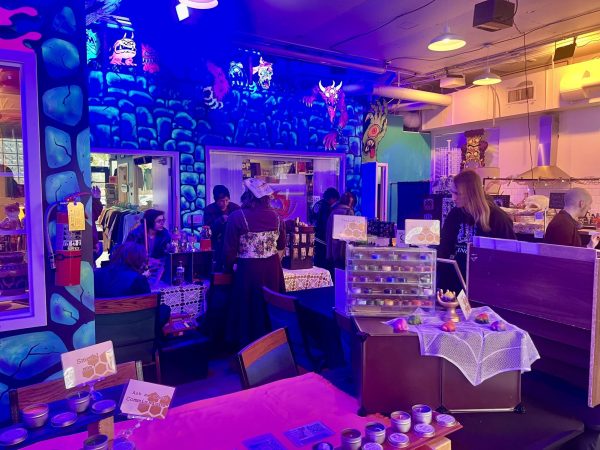From the writer of “Fred 3: Camp Fred,” Drew Hancock’s movie directorial debut “Companion” is a slasher with a blend of humor, romance and commentary on the increasingly automated world.
Released Friday, “Companion” follows characters Josh and Iris as their relationship unravels after the death of a billionaire. Portrayed by Jack Quaid and Sophie Thatcher respectively, the two engage in a cat-and-mouse game as the stakes rise.
To get the obvious out of the way, Iris is a robot. Or, as she is more commonly referred to in the movie, a sex robot or “fuckbot.”
The movie follows her journey to sentience and independence as she becomes consciously aware she is nothing more than an accessory to Josh. The audience watches as she discovers she has no real purpose other than to be his toy.
This is reflected in her contentious dynamic with the only living and breathing female character in the movie, Kat, played by Megan Suri. The two act as a striking mirror of each other, highlighting the commodification of the female body.
Thatcher attacks this complexity with ferocity, bringing vulnerability to the confused Iris as she learns her true place in the lives of those around her.
Each character treats her with a level of callousness that is not entirely uncommon in our increasingly automated society. She is on the same level as a Roomba, a self-driving car or an automated wine bottle opener — another tool for them to use and discard.
“Companion” asks the audience to question if they can pity an artificial human as Iris attempts to escape her worsening conditions for a chance at life and freedom away from Josh.
It also asks if robots can fall in love.
Throughout the movie, it is questioned whether a robot with advanced artificial intelligence and programming can experience love. It is described by characters as feeling as if they are on fire, or “bright.”
In reality, AI and robots cannot experience human emotions like love or fear. The current state of programming can only create a reflection of our emotions, as suggested by Shannon Vallor in her book “The AI Mirror: How to Reclaim our Humanity in an Age of Machine Thinking.” But that does not mean the reflection cannot be uncannily similar to human emotion.
“Companion” works because it asks questions of its audience and demands an answer.
It also shows that sometimes the perfect movie to celebrate Valentine’s Day is about a robot girlfriend gaining humanity and fighting back.

